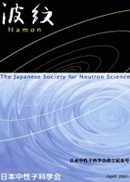Volume 24, Issue 2
Displaying 1-12 of 12 articles from this issue
- |<
- <
- 1
- >
- >|
-
2014Volume 24Issue 2 Pages 84-89
Published: 2014
Released on J-STAGE: November 14, 2018
Download PDF (1858K) -
2014Volume 24Issue 2 Pages 90-93
Published: 2014
Released on J-STAGE: November 14, 2018
Download PDF (5188K) -
2014Volume 24Issue 2 Pages 94-99
Published: 2014
Released on J-STAGE: November 14, 2018
Download PDF (7593K) -
2014Volume 24Issue 2 Pages 100-105
Published: 2014
Released on J-STAGE: November 14, 2018
Download PDF (6787K) -
2014Volume 24Issue 2 Pages 106-110
Published: 2014
Released on J-STAGE: November 14, 2018
Download PDF (1456K) -
2014Volume 24Issue 2 Pages 111-114
Published: 2014
Released on J-STAGE: November 14, 2018
Download PDF (1638K) -
2014Volume 24Issue 2 Pages 115-120
Published: 2014
Released on J-STAGE: November 14, 2018
Download PDF (2623K)
-
2014Volume 24Issue 2 Pages 121-125
Published: 2014
Released on J-STAGE: November 14, 2018
Download PDF (1308K) -
2014Volume 24Issue 2 Pages 126-131
Published: 2014
Released on J-STAGE: November 14, 2018
Download PDF (1457K)
-
2014Volume 24Issue 2 Pages 132-140
Published: 2014
Released on J-STAGE: November 14, 2018
Download PDF (3034K)
-
2014Volume 24Issue 2 Pages 141-150
Published: 2014
Released on J-STAGE: November 14, 2018
Download PDF (2087K) -
2014Volume 24Issue 2 Pages 151-155
Published: 2014
Released on J-STAGE: November 14, 2018
Download PDF (1803K)
- |<
- <
- 1
- >
- >|
